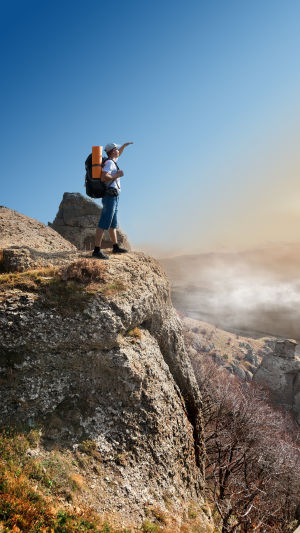Hiking and climbing are both great outdoor activities that allow individuals to exercise, relax, and appreciate nature's beauty.
However, these activities require a certain level of physical strength, skills, and equipment.
Without these, you may face various dangers and difficulties.
Therefore, before participating in hiking and climbing, it is crucial to know some basic precautions and safety measures to ensure everyone's safety.
First and foremost, before going on a hike or climb, adequate preparation is necessary. This includes:
Selecting a suitable route and destination: One should choose a route and destination that fits their level and interest based on their physical strength, experience, time, and other factors.
It is essential to know the length, difficulty, elevation, and terrain of the route and check the local weather forecast to avoid bad weather or unexpected events.
Carrying necessary equipment and items: Appropriate clothing, shoes, backpacks, and other equipment should be chosen based on the route and weather conditions.
It is necessary to carry important items such as water, food, medicine, maps, compass, flashlights, etc.
One should try to reduce the backpack's weight, but important items should not be neglected.
Conducting a physical check and warm-up: Before leaving, one should make sure they are healthy and do some simple warm-up exercises such as stretching muscles and moving joints to prevent injuries or cramps.
Furthermore, it is important to maintain good form and habits during the hike or climb. This includes:
Maintaining a proper pace and rhythm: One should not march too fast or too slow but adjust the speed and rhythm according to their own and their companions' actual situations.
It is essential not to be greedy for speed and ignore the scenery or rest time, nor should the trip be delayed or concealed danger.
Hydration and nutrition: Individuals consume a lot of water and energy during the hike or climb; therefore, it is crucial to replenish water and nutrition promptly and pay attention to dietary hygiene.
Drinking water or eating snacks now and then is advisable, and avoiding alcohol or eating oily, spicy, and other stimulating foods is essential.
Observing rules and etiquette: One should abide by local laws and regulations and rules for outdoor activities while traveling, respect local cultural customs, and the rights and interests of other people.
It is essential to avoid littering, damaging vegetation, disturbing wildlife, making loud noises, leaving the group without permission, keeping in touch with companions, and being friendly with other people.
Lastly, it is important to be prepared for emergencies during the hike or climb. Some emergency preparedness measures include: Carrying a first aid kit: Individuals should carry a first aid kit with them, including necessary medical supplies such as bandages, gauze, antiseptics, etc.
Knowing emergency contacts: It is important to know emergency contacts, such as the local emergency services, park rangers, or mountain rescue teams.
Knowing the route: Individuals should familiarize themselves with the route, and have a map, and compass. They should also inform someone about their itinerary and expected return time.
Hiking and climbing are both great outdoor activities that allow individuals to appreciate nature's beauty while exercising and relaxing.
However, safety should always come first, and individuals must take necessary precautions and safety measures to ensure their safety and that of others.
Adequate preparation, maintaining good form and habits, and emergency preparedness are all essential components of a safe and enjoyable hiking or climbing experience.





